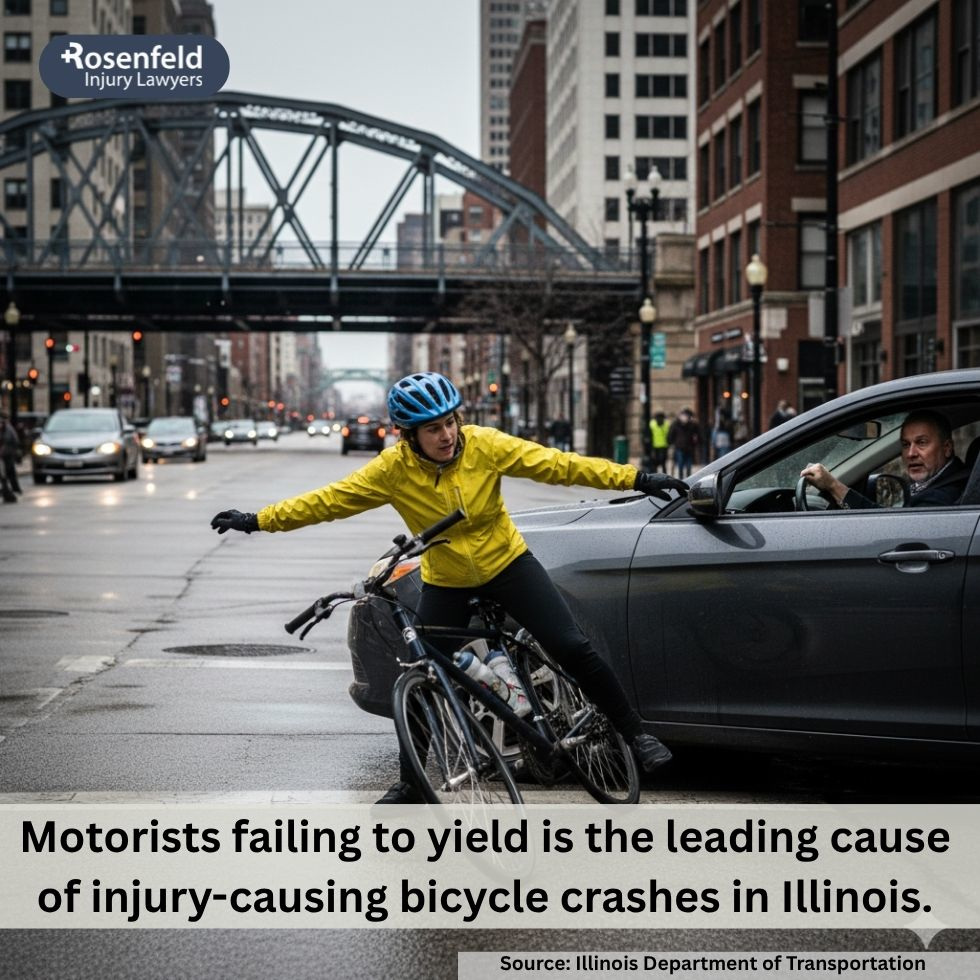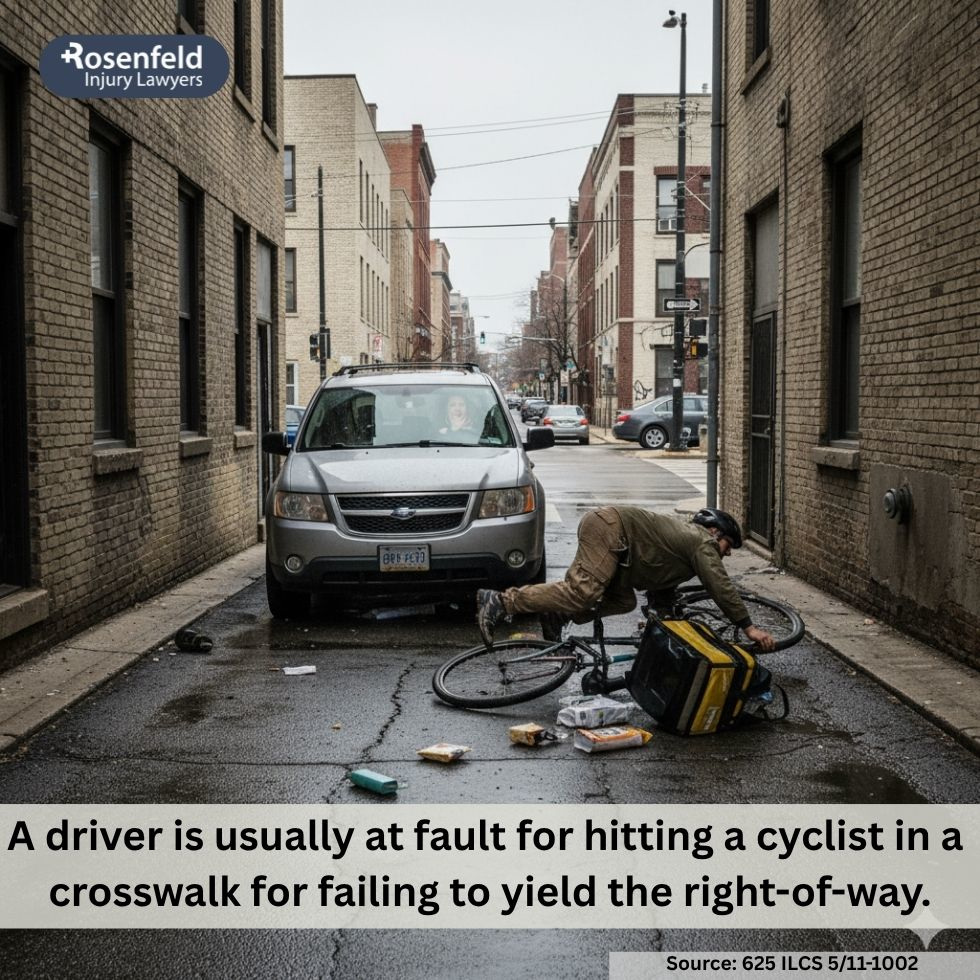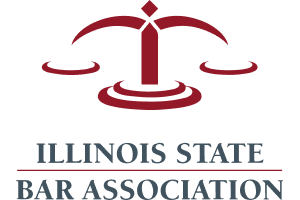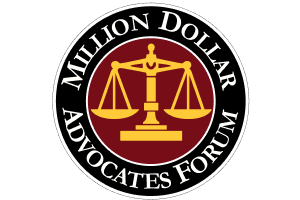- 24/7 Free Consultation: (888) 424-5757 Tap Here To Call Us
How to Determine Fault in a Chicago Bicycle Accident

Understanding Bike Crash Liability
Determining fault in a Chicago bicycle accident is essential for injured cyclists seeking compensation for medical expenses, property damage, and lost wages. Understanding how to determine fault in a Chicago bicycle accident involves analyzing traffic laws, gathering crucial evidence, and assessing factors like right-of-way violations or negligent driving.
Whether the crash occurs in a protected bike lane, at an intersection, or on a busy city street, proving liability is key to holding the at-fault party accountable and securing the compensation you deserve. If you need legal guidance, a Chicago bike accident lawyer can help you navigate the claims process and fight for maximum compensation.
Bicyclists’ Rights and Responsibilities Under Illinois Law
As detailed in the Illinois Rules of the Road, cyclists have the same rights and must follow the same road rules as motor vehicles. This includes obeying traffic lights, signs, and hand signals when turning.
Bicyclists must ride in a designated lane when available, stay on the right side of the road, and use lights at night. In the event of a bicycle accident, these traffic laws help determine liability and whether the cyclist or driver is at fault.
Motorists’ Duties to Bicyclists
Drivers must follow traffic laws and share the road safely with cyclists by:
- Yielding to bicyclists at traffic signals and stop signs;
- Checking blind spots before turning or merging;
- Leaving at least three feet of space when passing a cyclist;
- Avoiding distracted driving, such as texting;
- Never blocking protected bike lanes.
If a driver violates these laws and causes a bike accident, they can be held responsible for the cyclist’s medical bills, property damage, and other losses.
The Illinois Vehicle Code (625 ILCS 5/)
Illinois law provides legal protections for injured bicyclists:
- 625 ILCS 5/11-1003.1 requires drivers to yield to cyclists in intersections;
- As mandated in 625 ILCS 5/11-1505, bicyclists must ride on the right side unless avoiding hazards;
If a driver violates these laws, they may be held liable for any bicycle accident that occurs.

Chicago Municipal Ordinances Related to Bicycles
Chicago has additional laws to protect injured cyclists, including:
- Code 9-40-060, prohibiting vehicles from parking in protected bike lanes;
- Code 9-52-010(a), granting cyclists the same rights as other vehicles in moving traffic.
A Chicago bicycle accident lawyer can use these ordinances to strengthen an injured cyclist’s case.
“Dooring” Laws and Liability
A dooring accident occurs when a driver or passenger opens a car door into a cyclist’s path. Both Illinois law (625 ILCS 5/11-1407) and the Chicago Municipal Code (9-80-035) make it illegal for vehicle occupants to open doors without checking for oncoming cyclists.
If a cyclist is injured in a dooring accident, the person who opened the door can be liable for any damages arising from the accident.
Common Causes of Bicycle Accidents and How Fault is Determined
Fault in a bicycle accident depends on whether a driver, cyclist, or another party violated traffic laws. Some of the most common bicycle accident causes include:
- Left-turn accidents – A motor vehicle turning left must yield to oncoming bicyclists. Failing to do so often makes the driver liable.
- Right-turn accidents – A car turning right into a cyclist’s path is usually held responsible.
- Rear-end collisions – A driver hitting a cyclist from behind is almost always at fault.
- Sideswipe accidents – The driver may be liable if a vehicle fails to leave at least three feet of space while passing.
- Dooring accidents – Opening a car door into a cyclist’s path is illegal, holding the occupant responsible.
- Intersection accidents – Running red lights or ignoring stop signs places fault on the driver.
- Accidents caused by road hazards – Poor road conditions may make the city or municipality liable for crashes.
Evidence Used to Determine Fault in a Bicycle Accident
Strong evidence is crucial in establishing fault in a bicycle accident case. Key evidence includes:
- Police report – Officers document how the accident occurs, including statements from those involved and any traffic law violations.
- Witness statements – Bystanders can provide unbiased accounts of the crash, supporting the injured cyclist’s claim.
- Photographs and videos of the accident scene – Pictures of traffic signals, bicycle lanes, property damage, and injuries help establish fault.
- Medical records – Documentation of serious injuries such as broken bones and medical bills connects the crash to the cyclist’s condition.
- Expert testimony – Accident reconstruction experts analyze the circumstances to determine who was liable.
- Surveillance camera footage – Nearby security or traffic cameras may capture the bike accident, providing clear evidence of what happened.

Illinois’ Modified Comparative Negligence Rule
Illinois follows a modified comparative negligence rule, meaning an injured cyclist can recover compensation if they are less than 51% at fault for the bicycle accident. However, their total damages are reduced by their percentage of fault.
For example, if a cyclist is awarded $100,000 but found 20% at fault, they would receive $80,000 after the reduction. They cannot recover damages if they are 51% or more at fault.
Dealing with Insurance Companies After a Bicycle Accident
After a bicycle accident, insurance companies often try to minimize payouts by blaming the cyclist or undervaluing medical care expenses and property damage. To protect your rights, avoid admitting fault or making recorded statements without legal guidance, as anything you say may be used against you.
Keep all medical records and bills, police reports, and repair estimates to support your claim. Before accepting any settlement, consult a personal injury lawyer to ensure you receive fair compensation. An attorney can negotiate with the insurer and fight for the favorable settlement you deserve.
The Role of a Chicago Bicycle Accident Lawyer
A Chicago personal injury lawyer is critical in determining fault and securing maximum compensation for injured cyclists. Insurance companies often try to shift blame onto the cyclist or minimize payouts, making it essential to have legal representation. A motor vehicle accident attorney can help by:
- Investigating the accident – Gathering police reports, witness statements, surveillance footage, and expert testimony to prove liability.
- Handling negotiations – Dealing with the insurance company to ensure fair compensation for medical care expenses, property damage, and lost wages.
- Proving negligence – Demonstrating how the driver violated traffic laws, such as running a red light, failing to yield, or engaging in distracted driving.
- Protecting against unfair fault claims – Illinois’ modified comparative negligence rule means your damages can be reduced if you are found partially at fault. A personal injury attorney fights to minimize your responsibility.
- Filing a lawsuit if necessary – A lawyer can take your personal injury case to court if a favorable settlement isn’t reached.
Secure Expert Legal Counsel!

If you’ve been injured in a bicycle accident, you need an experienced advocate to protect your rights. At Rosenfeld Injury Lawyers, our team fights for injured bicyclists to secure maximum compensation.We work on a contingency fee basis, meaning you pay nothing unless we win your case. Call us at (888) 424-5757 or fill out our contact form to schedule your free consultation. We are located at 225 Wacker Drive, #1660 in Chicago, Illinois 60606.
All content undergoes thorough legal review by experienced attorneys, including Jonathan Rosenfeld. With 25 years of experience in personal injury law and over 100 years of combined legal expertise within our team, we ensure that every article is legally accurate, compliant, and reflects current legal standards.







